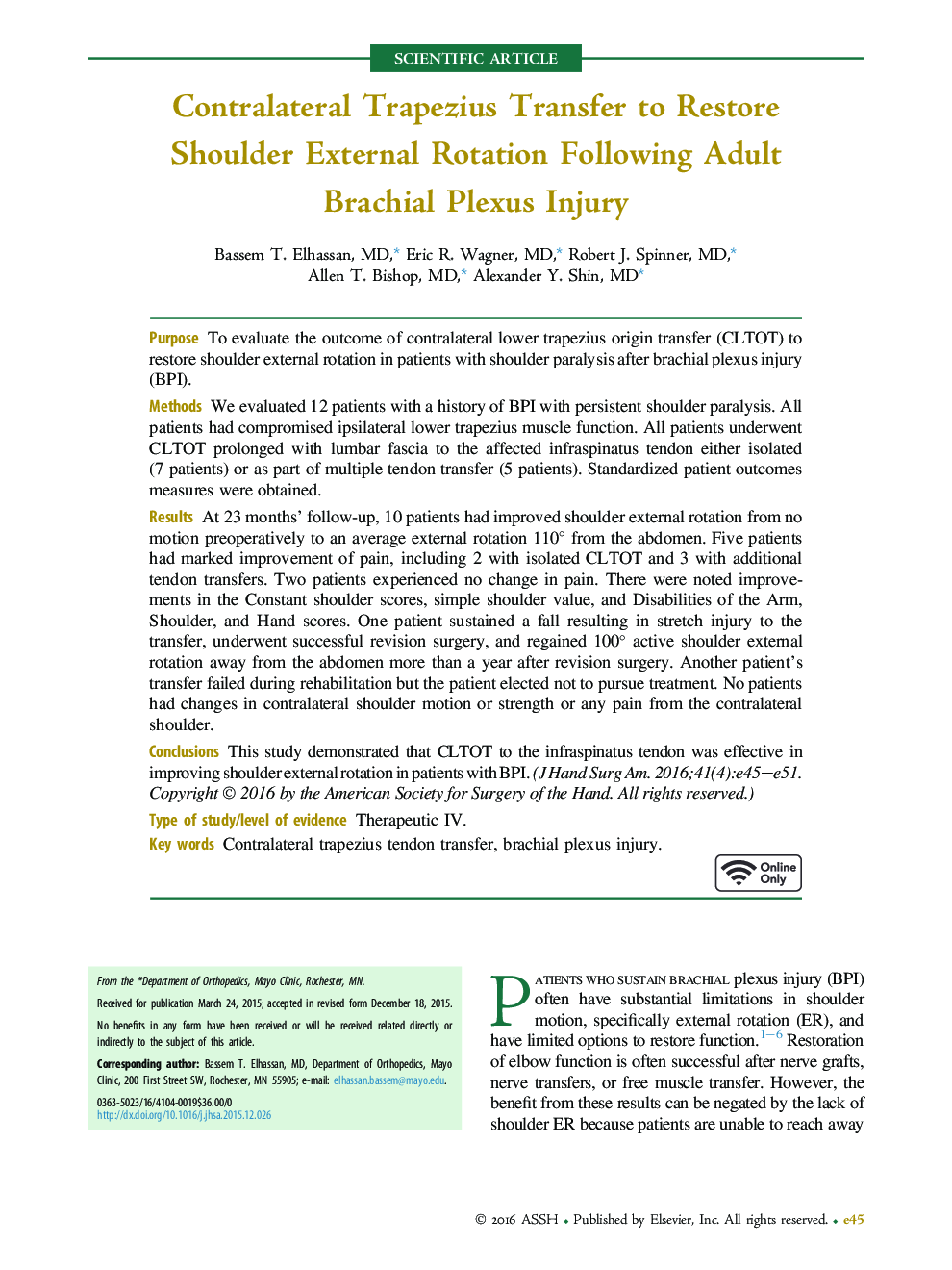| Article ID | Journal | Published Year | Pages | File Type |
|---|---|---|---|---|
| 4066020 | The Journal of Hand Surgery | 2016 | 7 Pages |
PurposeTo evaluate the outcome of contralateral lower trapezius origin transfer (CLTOT) to restore shoulder external rotation in patients with shoulder paralysis after brachial plexus injury (BPI).MethodsWe evaluated 12 patients with a history of BPI with persistent shoulder paralysis. All patients had compromised ipsilateral lower trapezius muscle function. All patients underwent CLTOT prolonged with lumbar fascia to the affected infraspinatus tendon either isolated (7 patients) or as part of multiple tendon transfer (5 patients). Standardized patient outcomes measures were obtained.ResultsAt 23 months’ follow-up, 10 patients had improved shoulder external rotation from no motion preoperatively to an average external rotation 110° from the abdomen. Five patients had marked improvement of pain, including 2 with isolated CLTOT and 3 with additional tendon transfers. Two patients experienced no change in pain. There were noted improvements in the Constant shoulder scores, simple shoulder value, and Disabilities of the Arm, Shoulder, and Hand scores. One patient sustained a fall resulting in stretch injury to the transfer, underwent successful revision surgery, and regained 100° active shoulder external rotation away from the abdomen more than a year after revision surgery. Another patient’s transfer failed during rehabilitation but the patient elected not to pursue treatment. No patients had changes in contralateral shoulder motion or strength or any pain from the contralateral shoulder.ConclusionsThis study demonstrated that CLTOT to the infraspinatus tendon was effective in improving shoulder external rotation in patients with BPI.Type of study/level of evidenceTherapeutic IV.
